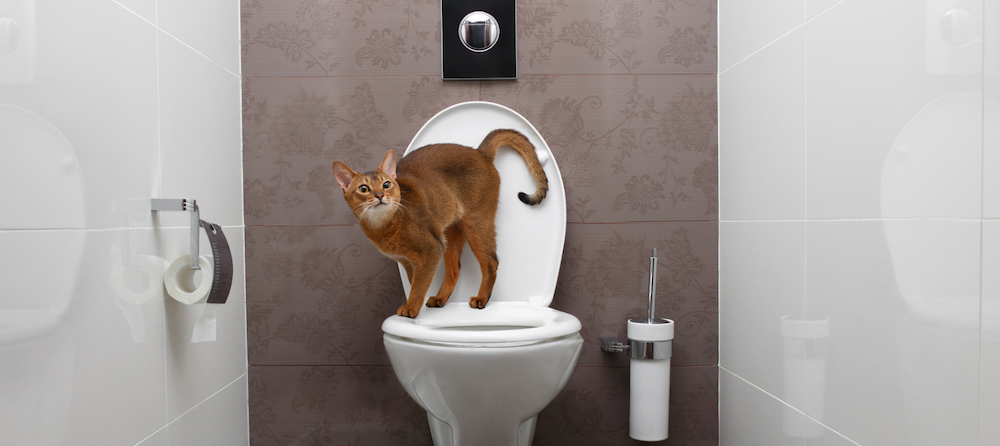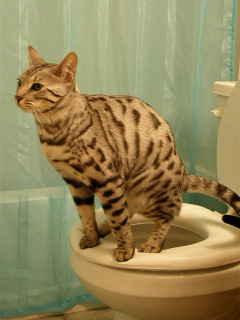Avoid Flush Cat Poop Down Your Toilet - Safeguard Your Pipes Infrastructure
Avoid Flush Cat Poop Down Your Toilet - Safeguard Your Pipes Infrastructure
Blog Article
Everybody will have their personal rationale in relation to Can You Flush Cat Poop Down The Toilet?.

Intro
As pet cat proprietors, it's necessary to be mindful of exactly how we take care of our feline buddies' waste. While it might appear hassle-free to purge pet cat poop down the toilet, this method can have damaging effects for both the environment and human health.
Alternatives to Flushing
Fortunately, there are safer and much more accountable methods to take care of cat poop. Consider the following options:
1. Scoop and Dispose in Trash
The most common method of throwing away feline poop is to scoop it right into an eco-friendly bag and toss it in the garbage. Make sure to make use of a committed trash inside story and deal with the waste immediately.
2. Use Biodegradable Litter
Choose naturally degradable feline litter made from products such as corn or wheat. These litters are eco-friendly and can be securely dealt with in the trash.
3. Bury in the Yard
If you have a lawn, think about hiding cat waste in a marked area away from veggie gardens and water resources. Make sure to dig deep sufficient to prevent contamination of groundwater.
4. Mount a Pet Waste Disposal System
Buy a pet dog garbage disposal system especially designed for feline waste. These systems utilize enzymes to break down the waste, lowering odor and environmental impact.
Wellness Risks
In addition to ecological worries, flushing cat waste can also posture health and wellness dangers to humans. Pet cat feces might have Toxoplasma gondii, a parasite that can create toxoplasmosis-- a possibly severe ailment, specifically for pregnant ladies and individuals with weakened immune systems.
Ecological Impact
Flushing pet cat poop introduces harmful pathogens and parasites right into the supply of water, posing a substantial risk to marine environments. These contaminants can adversely impact aquatic life and concession water high quality.
Conclusion
Liable animal possession prolongs beyond providing food and shelter-- it additionally involves appropriate waste monitoring. By refraining from purging feline poop down the commode and choosing alternate disposal techniques, we can decrease our environmental impact and secure human health and wellness.
Why Can’t I Flush Cat Poop?
It Spreads a Parasite
Cats are frequently infected with a parasite called toxoplasma gondii. The parasite causes an infection called toxoplasmosis. It is usually harmless to cats. The parasite only uses cat poop as a host for its eggs. Otherwise, the cat’s immune system usually keeps the infection at low enough levels to maintain its own health. But it does not stop the develop of eggs. These eggs are tiny and surprisingly tough. They may survive for a year before they begin to grow. But that’s the problem.
Our wastewater system is not designed to deal with toxoplasmosis eggs. Instead, most eggs will flush from your toilet into sewers and wastewater management plants. After the sewage is treated for many other harmful things in it, it is typically released into local rivers, lakes, or oceans. Here, the toxoplasmosis eggs can find new hosts, including starfish, crabs, otters, and many other wildlife. For many, this is a significant risk to their health. Toxoplasmosis can also end up infecting water sources that are important for agriculture, which means our deer, pigs, and sheep can get infected too.
Is There Risk to Humans?
There can be a risk to human life from flushing cat poop down the toilet. If you do so, the parasites from your cat’s poop can end up in shellfish, game animals, or livestock. If this meat is then served raw or undercooked, the people who eat it can get sick.
In fact, according to the CDC, 40 million people in the United States are infected with toxoplasma gondii. They get it from exposure to infected seafood, or from some kind of cat poop contamination, like drinking from a stream that is contaminated or touching anything that has come into contact with cat poop. That includes just cleaning a cat litter box.
Most people who get infected with these parasites will not develop any symptoms. However, for pregnant women or for those with compromised immune systems, the parasite can cause severe health problems.
How to Handle Cat Poop
The best way to handle cat poop is actually to clean the box more often. The eggs that the parasite sheds will not become active until one to five days after the cat poops. That means that if you clean daily, you’re much less likely to come into direct contact with infectious eggs.
That said, always dispose of cat poop in the garbage and not down the toilet. Wash your hands before and after you clean the litter box, and bring the bag of poop right outside to your garbage bins.
https://trenchlesssolutionsusa.com/why-cant-i-flush-cat-poop/

As a person who reads about Can You Flush Cat Poop Down The Toilet?, I figured sharing that excerpt was a smart idea. Enjoyed reading our piece? Please share it. Help someone else locate it. Many thanks for your time. Visit us again soon.
Click Here Report this page